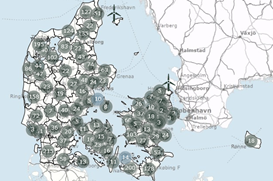Wind power!
Open Data for levering energy targets
With the World Climate Conference taking place in Bonn these day, the question of renewables comes once again to the fore. Renewable energy is a game changer, as it alters the dependency on fossil fuels and brings in more sustainability and innovation. The European Union Renewable Energy Directive sets forth a binding target of 20% final energy consumption from renewable sources by 2020. EU countries have already agreed on a new renewable energy target of at least 27% of final energy consumption in the EU as a whole by 2030 as part of the EU's energy and climate goals for 2030. To achieve this, a significant energy transition has been occurring in the past decade. Besides, energy production based on solar, hydro, tidal, geothermal and biomass, wind energy is one of Europe's sources for clean energy. What do Open Data tell us about wind and the energy it generates?
Some datasets on wind energy inform us on where to find the wind turbines that contribute to our environmental ambitions. Discover for instance this Irish interactive map that depicts where to find wind farm across Ireland.

This Danish variant shows you where wind turbines are located, as well as their energy capacity, total height and rotor diameter. However, wind turbines are not effective if there is no wind at all. In other words, where to find wind? To know everything about this in Switzerland, you can consult their interactive Swiss Wind Atlas.

Despite the environmental advantages of wind turbines, societal debates revolve around the visual presence and noise of onshore and offshore wind farms. Luckily, there are also less disputable wind farm landscapes, for instance in the case of the traditional windmills in the Netherlands. Related Open Data on this type of cultural heritage can be found in this this Dutch map. Information about the wind is not only relevant for producing clean energy. It can also serve as a guide whenever visiting the beach. Particularly in this time of the year, one might be warned for high waves and dangerous weather conditions. The SeaMobile application use case, is an example of such an Open Data solution. It uses local information, marine forecasts (waves, currents, temperature, salinity and winds) and weather forecasts to inform tourists and recreational sector about the beaches and marine waters.
Interested in the field of renewable energy? Then go ahead and explore other available datasets available on the European Data Portal!
